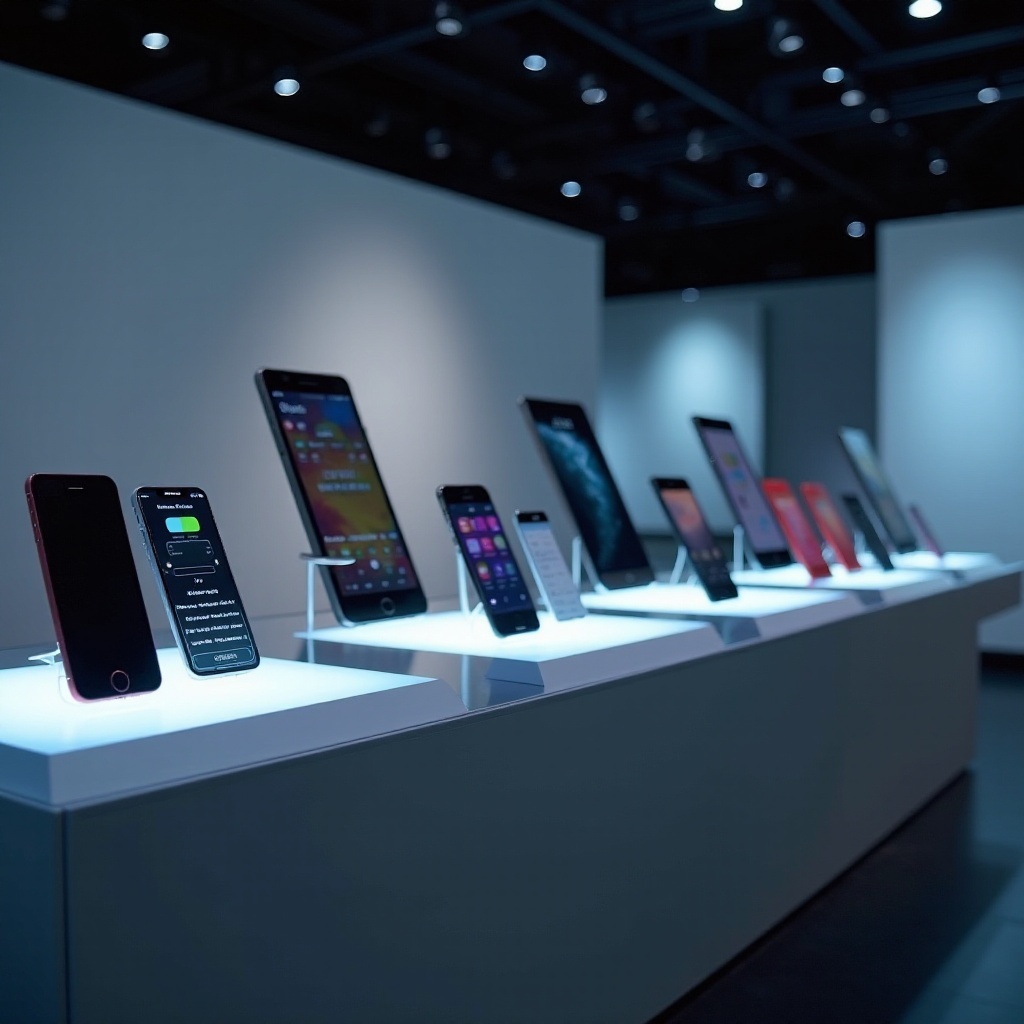Introduction
The smartphone has indubitably transformed our world. Its journey from a mere concept to an indispensable tool of modern life is intriguing. This piece delves deeply into the history and evolution of smartphones, guiding you through their inception, technological advancements, and cultural impact. Understanding the birth and growth of the smartphone offers a glimpse into how technological innovations shape society.

The Precursors to the Modern Smartphone
Before diving into the world of smartphones, it’s essential to recognize the devices that laid the groundwork. The invention of the telegraph in the 19th century introduced the concept of long-distance communication. This innovation was followed by the telephone in 1876 by Alexander Graham Bell, which brought voice communication to the masses.
In the mid-20th century, the development of electronic computers and the ARPANET, an early version of the Internet, set the stage for advanced communication technology. Concurrently, the creation of mobile radio communications in the 1940s paved the way for the cellular technology that would underpin mobile phones.
In the 1980s, the first handheld mobile phones, like the Motorola DynaTAC, became available. Although bulky and expensive, they represented a significant step towards mobile communication. These early mobile phones facilitated voice calls on the go, hinting at the potential for something more compact and multifunctional.
Recognizing these precursors allows us to appreciate the technological strides made in creating the first smartphone. Each of these innovations introduced critical features that would eventually converge in the modern smartphone.
The Birth of the Smartphone Concept
The concept of a smartphone, a handheld device that combines multiple functionalities beyond simple communication, started to take shape in the late 20th century. A pivotal moment came in 1992 when IBM unveiled the Simon Personal Communicator at COMDEX. This device, often referred to as the first smartphone, featured a touch screen, calendar, address book, and the ability to send and receive emails.
IBM’s Simon was ahead of its time, highlighting the potential for devices that weren’t just phones but also served as digital assistants. Although it was bulky and had limited battery life, the Simon laid the foundation for future innovations. It demonstrated the demand for a versatile device capable of handling various tasks, paving the way for more sophisticated smartphones.
Following Simon, other companies began exploring similar concepts. Nokia, for example, released the Nokia 9000 Communicator in 1996. This device combined features of a personal digital assistant (PDA) with a mobile phone, furthering the evolution of smartphones. These early efforts illustrated the growing interest in a single device offering multiple functionalities, setting the stage for the smartphone revolution.
Pioneering Companies and Innovators
Several companies and innovators played crucial roles in the smartphone’s development. IBM’s Simon, Nokia’s Communicator series, and Ericsson’s R380 were early examples, but it was in the late 1990s and early 2000s that significant strides occurred.
Palm, Inc. introduced the Palm Treo line, which combined the functionality of a PDA with phone capabilities. Around this period, Research In Motion (RIM) launched the BlackBerry, revolutionizing business communication with its secure email services. The BlackBerry quickly became a must-have for professionals, showing that a mobile device could enhance productivity and communication.
Apple’s entry into the market in 2007 with the iPhone was a game-changer. Steve Jobs and his team at Apple redefined what a smartphone could be by creating a device that was not only a communication tool but also a multimedia powerhouse. The iPhone’s touch screen interface, App Store, and intuitive design set new standards, propelling the smartphone industry to unprecedented heights.
Simultaneously, Google’s Android operating system, launched in 2008, provided a versatile and customizable platform for various manufacturers. Companies like Samsung, HTC, and LG adopted Android, leading to a proliferation of diverse smartphone designs. The competition between iOS and Android catalyzed rapid innovation, benefiting consumers with ever-improving devices.
Technological Milestones in Smartphone Development
Smartphone development has been characterized by numerous technological milestones. These innovations have continuously redefined user experiences and expanded functionalities.
- Touchscreen Technology: The advent of capacitive touchscreens, as opposed to resistive screens, allowed for more precise and responsive touch interactions. This innovation was crucial in making smartphones more user-friendly.
- App Ecosystems: Apple’s App Store and Google Play created robust ecosystems where developers could distribute applications, dramatically increasing the utility of smartphones.
- Mobile Internet Connectivity: The adoption of 3G, 4G, and now 5G technology has significantly enhanced mobile Internet speeds, facilitating seamless browsing, streaming, and real-time communication.
- Camera Technology: The integration of high-quality cameras transformed smartphones into essential tools for photography and videography, replacing standalone cameras for many users.
- Biometric Security: Features like fingerprint sensors and facial recognition have improved security while offering convenient ways to unlock devices and authenticate users.
- Artificial Intelligence: AI advancements have led to smarter voice assistants, improved battery management, and predictive text, enhancing the overall user experience.
Each of these milestones has played a part in morphing smartphones from simple communication devices to essential tools in daily life.

The Social and Cultural Impact of Smartphones
Smartphones have profoundly influenced modern culture and social interaction. They have altered how people communicate, access information, and entertain themselves. Social media platforms like Facebook, Twitter, and Instagram, predominantly accessed via smartphones, have reshaped social dynamics and information dissemination.
- Communication: Instant messaging, video calls, and social media have made it easier to maintain personal and professional connections worldwide.
- Information Access: The Internet, available at our fingertips, has democratized information, making it easier to learn and stay informed about global events.
- Entertainment: Streaming services, mobile games, and multimedia apps have turned smartphones into primary entertainment devices.
- Commerce: Mobile banking, online shopping, and e-wallets have revolutionized commerce, making transactions more accessible and convenient.
- Health and Fitness: Health monitoring apps and wearable technology integration have promoted fitness, helping users track and improve their health habits.
However, smartphones also pose challenges, including screen addiction, privacy concerns, and the spread of misinformation. As smartphones continue to evolve, society must address these issues while harnessing the benefits.

The Future of Smartphone Technology
Looking ahead, the smartphone industry is poised for continued innovation. Emerging technologies promise to make smartphones more powerful and versatile.
- Foldable and Flexible Displays: Companies like Samsung and Huawei are already experimenting with foldable screens, which could redefine the form factor of smartphones.
- Improved AI Integration: Advanced AI will further enhance user experiences through personalized recommendations, smarter virtual assistants, and improved hardware performance.
- 5G and Beyond: The proliferation of 5G networks will enable even faster data speeds and lower latency, opening up new possibilities for augmented reality (AR) and virtual reality (VR) applications.
- Sustainable Practices: With growing environmental awareness, manufacturers are focusing on sustainable materials and manufacturing processes to reduce the carbon footprint of devices.
- Extended Reality (XR): AR and VR technologies are expected to become more integrated, providing immersive experiences for gaming, education, and remote work.
These developments indicate that smartphones will continue to be integral to our lives, constantly adapting to meet evolving needs and preferences.
Conclusion
The invention of the smartphone marks a remarkable journey from rudimentary communication devices to multifunctional, indispensable tools. Key innovations, pioneering companies, and ongoing technological advancements have contributed to the rapid evolution of smartphones. As society continues to incorporate these devices into daily life, understanding their history helps us appreciate the immense effort and creativity behind their creation.
Frequently Asked Questions
Who is credited with inventing the first smartphone?
IBM is credited with inventing the first smartphone, the Simon Personal Communicator, released in 1994.
What were the main technological advancements that led to the invention of smartphones?
Key advancements include mobile communication technology, touchscreen interfaces, app ecosystems, and mobile Internet connectivity.
How have smartphones impacted modern society?
Smartphones have revolutionized communication, information access, entertainment, commerce, and health monitoring, profoundly influencing modern lifestyle and culture.
